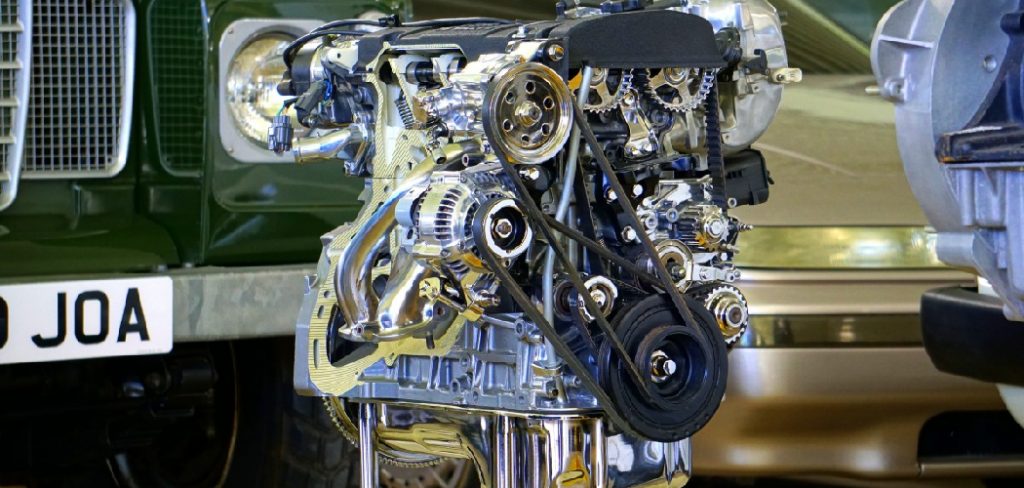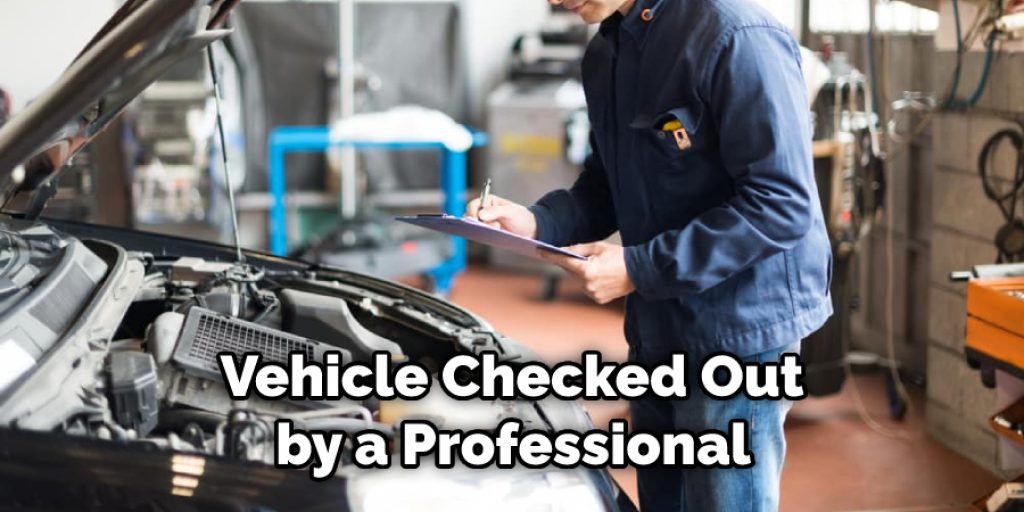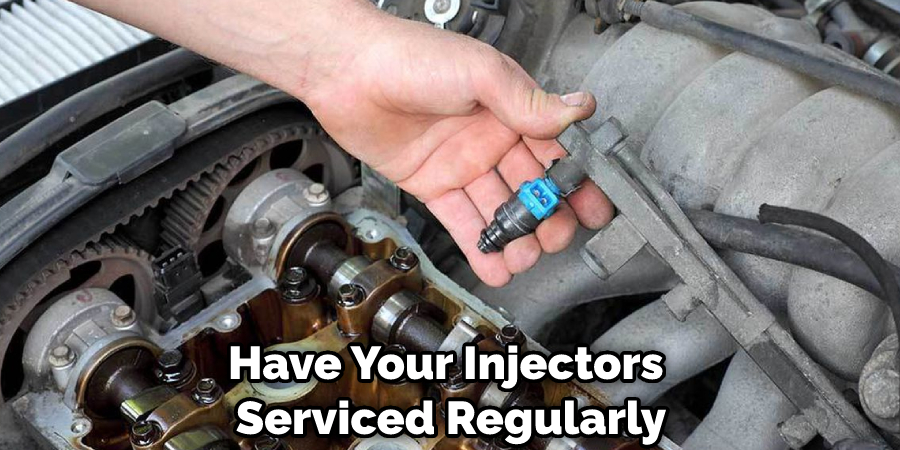Diesel engines are a workhorse of the automotive world. They’re reliable, durable, and efficient. But even the best engine can have trouble sometimes. So if you’re experiencing problems with your diesel engine, don’t panic! There is usually a solution available. In this article, we’ll discuss how to fix a stuck diesel injector. So read on to learn more!

Many diesel engines use a system of injectors to deliver fuel to the engine. These injectors are responsible for atomizing the fuel to be burned efficiently. However, over time these injectors can become stuck or clogged. As a result, the engine will run less efficiently and may even stall. If you think you may have a stuck diesel injector, there are a few things you can do to try and fix the problem.
Summary: Sometimes, diesel injectors may become stuck, leading to further engine problems. To fix a stuck injector, first determine which one is stuck and prepare yourself for the job.
Then disconnect the battery, remove the injector, and clean it. Inspect the injector for wear-and-tear or damage, install it back into the engine, and reconnect the battery. Start up the engine and check for leaks before testing the injector.
What Causes a Diesel Injector to Become Stuck Open or Closed
Diesel injectors are designed for quick, precise fuel injection into engines. However, sticking can occur from several things.
Dirt or Debris: One of the most common causes of a stuck injector is dirt or debris that has gotten into the fuel system and clogged up the injector. This can happen if you use low-quality fuel or your fuel filter is not working correctly.
Wear and Tear: Over time, the moving parts inside an injector can start to wear down, making it more likely to become stuck. This is especially true if the injector isn’t regularly serviced.
Improper Installation: If an injector is not installed correctly, it can become stuck open or closed. This usually happens when someone tries to clean an injector without disassembling it first.
What Are the Symptoms of a Stuck Diesel Injector
If you have a stuck diesel injector, you may notice one or more of the following symptoms:
- Engine misfires
- Reduced engine power
- Decreased fuel economy
- Rough idle
- Black smoke from the exhaust
If you notice any of these symptoms, it’s essential to have your vehicle checked out by a professional as soon as possible. A stuck injector can cause severe damage to your engine if left untreated. Why Injectors Get Stuck The injector gets stuck because the plunger inside the injector is not working correctly.
The plunger is what opens and closes the nozzle of the injector so that fuel can enter the engine. If the plunger is sticking, it will not open and close as it should. This can cause a variety of problems, including poor engine performance, loss of power, and increased fuel consumption. In some cases, a stuck injector can also cause the engine to stall.

A Step by Step Guide on How to Fix a Stuck Diesel Injector
Step 1: Gather Necessary Tools and Materials
Before attempting to fix a stuck diesel injector, gather the necessary tools and materials, including:
- Wrench set
- Socket set
- Screwdriver set
- Pliers
- Diesel injector puller tool
- Fuel system cleaner
- Clean rags
- Protective gloves
- Safety goggles
- Replacement injector (if needed)
Step 2: Locate the Stuck Injector
Consult your vehicle’s service manual to locate the diesel injectors in your engine. Diesel injectors are typically situated along the fuel rail, which supplies fuel to the injectors. Identify the stuck injector by checking for symptoms such as rough idling, engine misfires, or poor performance.
Step 3: Relieve Fuel Pressure
Before working on the fuel system, it is essential to relieve fuel pressure to prevent fuel from spraying when the injector is removed. Locate the fuel pressure relief valve or Schrader valve, typically found on the fuel rail, and depress it using a small screwdriver or similar tool. Wear safety goggles and protective gloves to avoid contact with fuel.
Step 4: Disconnect the Injector Electrical Connector
With the fuel pressure relieved, disconnect the electrical connector from the stuck diesel injector. This may require squeezing a tab or removing a retaining clip, depending on the connector type.
Step 5: Remove the Injector Retaining Bracket or Bolts
Diesel injectors are usually held in place by a retaining bracket or bolts. Using the appropriate wrench or socket, remove the bracket or bolts securing the stuck injector to the engine.
Step 6: Apply Fuel System Cleaner
Before attempting to remove the stuck injector, apply a fuel system cleaner to the injector and surrounding area. This can help dissolve any deposits or buildup that may be causing the injector to stick. Allow the cleaner to soak for several minutes.
Step 7: Use a Diesel Injector Puller Tool
A diesel injector puller tool is designed to remove stuck injectors without causing damage to the engine or injector. Attach the puller tool to the stuck injector, following the tool manufacturer’s instructions. Apply steady pressure to the tool, and gradually increase the force until the injector begins to loosen.
Step 8: Remove the Stuck Injector
Once the injector has been loosened with the puller tool, use pliers or a wrench to carefully remove it from the engine. Be cautious not to damage the injector or surrounding components.
Step 9: Inspect and Clean the Injector
With the injector removed, inspect it for signs of damage or excessive wear. If the injector is visibly damaged or excessively worn, it should be replaced. If the injector appears to be in good condition, clean it with fuel system cleaner and a soft-bristled brush to remove any deposits or buildup.
Step 10: Test the Injector
If the injector appears to be in good condition after cleaning, test it to ensure it is functioning properly. Reconnect the electrical connector and temporarily reinstall the injector in the engine. Turn the ignition key to the “ON” position without starting the engine and observe the injector for proper operation. If the injector does not function correctly, it should be replaced.
Step 11: Reinstall or Replace the Injector
If the injector has been cleaned and tested, reinstall it in the engine. If the injector is damaged or not functioning correctly, replace it with a new injector. Reattach the retaining bracket or bolts, and reconnect the electrical connector.
Step 12: Prime the Fuel System
After reinstalling or replacing the injector, prime the fuel system by turning the ignition key to the “ON” position for a few seconds, then back to the “OFF” position. Repeat this process several times to ensure fuel has reached the injector and air has been purged from the system.
Step 13: Start the Engine and Test
Once the fuel system has been primed, start the engine and let it idle for several minutes. Observe the engine for any signs of rough idling, misfires, or poor performance. If the problem persists, further troubleshooting may be necessary.
Step 14: Road Test the Vehicle
After the engine has idled for several minutes and appears to be functioning correctly, take the vehicle for a road test. Drive under various conditions, including different speeds and acceleration rates, to ensure the injector is operating correctly and the issue has been resolved.
Step 15: Monitor Fuel Consumption and Performance
In the days and weeks following the injector repair, monitor your vehicle’s fuel consumption and performance. An improvement in fuel efficiency or overall performance can indicate a successful repair.
Step 16: Regular Maintenance and Inspection
To prevent future injector issues, perform regular maintenance and inspections on your vehicle’s fuel system. This includes:
- Changing fuel filters at recommended intervals
- Using high-quality diesel fuel
- Adding fuel additives to clean and lubricate injectors
- Inspecting injectors for signs of wear or damage during routine maintenance
Step 17: Address Recurring Issues Promptly
If you continue to experience injector-related issues, consult a professional mechanic for further troubleshooting and repair. Recurring injector problems may indicate a more severe underlying issue with the fuel system or engine.
By following these steps, you can effectively fix a stuck diesel injector and improve your vehicle’s performance and fuel efficiency. Regular maintenance, proper fuel system care, and prompt attention to recurring issues can help prevent future injector problems and ensure the longevity of your diesel engine.
Tips for Preventing a Stuck Diesel Injector From Happening Again
If you’ve recently dealt with a stuck diesel injector, you know how frustrating and expensive it can be. You have to pay for the repairs, but you also lose valuable time and money while your car is in the shop.
Fortunately, there are some steps you can take to help prevent a stuck injector from happening again. Here are a few tips:
1. Use high-quality fuel. Cheap fuel is more likely to contain impurities that can clog your injectors. Stick with a reputable diesel fuel brand to help keep your injectors clean.
2. Have your injectors serviced regularly. Over time, deposits can build up on the injectors, causing them to become clogged. A professional cleaning will help remove these deposits and keep your injectors working correctly.
3. Use a fuel additive. Additives can help keep your fuel system clean and prevent deposits from building up on your injectors. Talk to your mechanic about which additive is best for your car.
4. Be careful when refueling. Don’t spill fuel on the engine or around the injectors when filling up your tank. Any contamination can cause problems down the road.
5. Watch for warning signs. If your car starts to run rough or smoke, it could indicate that your injectors are starting to get clogged. Have them checked out as soon as possible to avoid further damage.
You can help prevent a stuck diesel injector from happening again by following these tips. First, keep your fuel system clean and well-maintained to keep your car running smoothly.

Are There Any Risks Associated With Fixing a Stuck Diesel Injector Yourself
Fixing a stuck diesel injector can be tricky, and if not done correctly, it could lead to further issues with your engine. Therefore, it’s essential to be aware of the risks involved before attempting to fix a stuck injector on your own.
One of the most significant risks is damaging the injector pump. If the pump is damaged, it can lead to a loss of pressure in the fuel system, which can cause the engine to run erratically or even stall. Additionally, if you’re not careful when removing the stuck injector, you could damage the O-rings or seal. This could result in fuel leaks, which can be dangerous and damaging to your engine.
Another risk to consider is cross-threading the injector when attempting to remove it. This can cause severe damage to the engine and even render it unusable. It’s essential to be extra careful when removing a stuck injector to avoid this problem.
Finally, it’s worth noting that there is always a risk of fires when working on engines. So be sure to take all necessary precautions when working around fuel and combustible materials.
Overall, fixing a stuck diesel injector with several risks involved. However, it’s often possible to do it yourself if you’re careful and have the right tools. If you’re not comfortable taking on the task yourself, it’s always best to leave it to a professional mechanic.
Frequently Asked Questions
What Causes Diesel Injectors to Stick?
There are many potential causes of diesel injectors sticking, and the most common is clogged air filters. This can occur due to dirt, dust, or other debris that gets stuck in the filter media. Over time this will cause oil droplets to be forced into the engine’s cylinder chamber instead of being smoothly injected into the pistons.
In addition, excessive wear and tear on pressure points in the system (pistons, valves) can also result in a sticking issue. If you’re experiencing difficulty starting your diesel engine or if it won’t run at full power even after undergoing routine maintenance checks, then it may be worth examining your air filter for blockages. If necessary, have it replaced with a fresh one.
Can You Clean a Stuck Fuel Injector?
Some of these factors might include debris or rust blocking the system, a clogged fuel filter, or even a broken fuel injector. In most cases, it will be difficult to determine which of these issues is causing the issue, and it will require professional assistance in order to fix it.
What Are the Symptoms of a Stuck Open Injector?
If you are experiencing any of the following symptoms, it may be indicative of a stuck open injector:
– difficulty starting the engine
– rough idle
– decreased fuel efficiency
– misfiring or stalling
– loss of power
Conclusion
Diesel injectors are a critical part of the diesel engine. A stuck diesel injector can cause problems, from decreased fuel economy to complete engine failure. If you think your diesel injector is stuck, there are a few things you can do to try to fix it before taking it in for repair. In most cases, these tips will help free up the stuck diesel injector and get your engine running smoothly again. We hope you find this article on how to fix a stuck diesel injector helpful.
You Can Check It Out to: Fix a Leaking Fuel Injector
